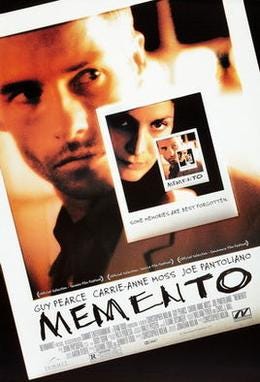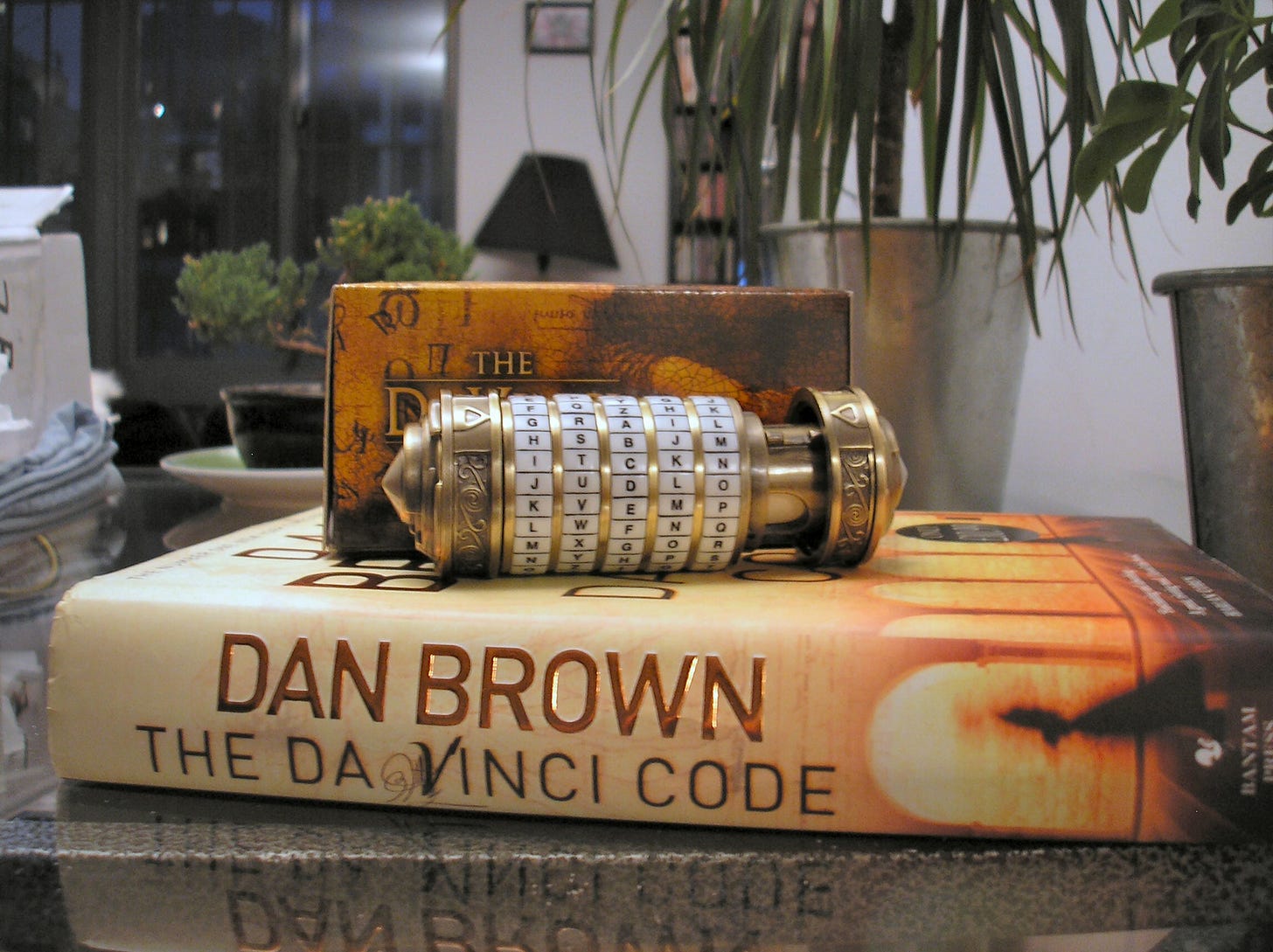The Unique Writing Styles That Drive Engagement
From Hypnosis to Cliffhangers — Five Techniques to Improve Your Writing and the Holy Grail

I have studied some less obvious hidden patterns and writing styles that drive audience engagement.
Inspired by “The Magic Art of Saying More with Less,” I will introduce five unique patterns that famous creators have used successfully. You can incorporate these techniques in your writing.
WARNING: If you fall into hypnosis (or sleep) while reading this story, the secret to the Holy Grail can be found at the end.
1. Semantic Satiation
Semantic satiation is a psychological phenomenon where the repetition of a word or phrase causes it to lose its meaning temporarily. The more a word is repeated, the more it sounds unfamiliar and abstract.
This concept is often used in literature and poetry to create a sense of disorientation, challenge the reader’s perception of language, and evoke unique emotional responses.

A classic example of semantic satiation can be found in “Jabberwocky,” a nonsensical poem written by Lewis Carroll in his novel “Through the Looking-Glass, and What Alice Found There.” The poem starts like this:
’Twas brillig, and the slithy toves
Did gyre and gimble in the wabe;
All mimsy were the borogoves,
And the mome raths outgrabe.
Carroll’s “Jabberwocky” is famous for using invented words and phrases that, while phonetically engaging and whimsical, lack clear, fixed meanings.
The poem is a playful linguistic experiment that combines familiar-sounding words and morphemes in novel ways, creating a sense of semantic satiation for readers.
As I read “Jabberwocky,” the unfamiliarity and repetition of invented words, such as “slithy,” “toves,” “borogoves,” and “mome raths,” cause my mind to momentarily detach from the usual process of interpreting words based on their conventional meanings.
Instead, I feel like embracing the poem’s unique, dreamlike language and allowing my imagination to take the lead.
This linguistic play in “Jabberwocky” demonstrates how semantic satiation can be used to create an almost hypnotic effect. As the reader encounters these unfamiliar and repetitive phrases, the meaning becomes elusive, and the focus shifts to the poem’s overall atmosphere, rhythm, and emotional impact, making it an engaging and immersive literary experience.
I have been interested in Ericksonian hypnotherapy for the last 10+ years, named after Dr. Milton H. Erickson. I have read several books on his techniques and listened to MP3 files from several clinical hypno therapists trying to treat my insomnia.
Some of the techniques used in clinical hypnotherapy sessions remind me of semantic satiation.
By distracting the conscious mind, Erickson was able to open the unconscious mind to hypnotic language. According to Erickson, nearly every one of his techniques employs confusion in some form.
For example, he would intentionally use vague language patterns, complex topics, confusing words, metaphors, and jokes to distract his patient’s conscious train of thought.
If you haven’t fallen into a trance yet, let’s discuss the following uncommon technique.
2. Pattern Interrupts
Human brains are wired to recognize and predict patterns. Introducing a deliberate disruption or unexpected twist in your content can jolt your readers’ attention.
For instance, insert a fictional story in the middle if you’re writing a how-to article. This deviation from the established pattern can be highly engaging.
In “Slaughterhouse-Five,” Kurt Vonnegut employs pattern interrupts to craft a narrative that defies linear time and challenges the traditional structure of a war novel.
The novel follows the life of its protagonist, Billy Pilgrim, who becomes “unstuck in time” after surviving the firebombing of Dresden during World War II. He experiences events out of sequence and often relives moments from his life as if they are happening concurrently.
My name is Yon Yonson,
I live in Wisconsin.
I work in a lumber yard there.
The people I meet as I walk down the street,
They say “Hello!”
I say “Hello!”
They say “What’s your name?”
I say: My name is Yon Yonson…
Vonnegut is using “Yon Yonson” as a motif, ultimately serving as a model for the recursive, time-repeating structure of the book
The novel incorporates science fiction elements, such as Billy’s encounters with the alien Tralfamadorians.
These fantastical elements are woven into the narrative without clear distinction from reality, creating a sense of ambiguity and interrupting conventional distinctions between the real and the unreal.
In the following article, I used the pattern interrupts technique by introducing Samuel Brannan, a California Gold Rush Entrepreneur, to provide a historical backstory on my “How To Build” guide.
Building a Cost-Effective Website to Enhance Your Marketing
In the fall of 1847, a fellow named Samuel Brannan opened a store at John Sutter’s Fort. A few months later, rumors circulated that gold had been found nearby at Coloma. He packed some of the precious metal into a quinine bottle and traveled a hundred miles back to San Francisco.
3. Metaphorical Language
Metaphorical language is a literary technique that uses metaphors and symbolic comparisons to convey complex ideas, emotions, and themes.
Herman Melville’s classic novel “Moby-Dick” is replete with vivid and thought-provoking metaphors, which enhance the narrative and contribute to the story's rich layers.
In “Moby-Dick,” the metaphors are abundant and serve various functions:
The White Whale (Moby Dick): The novel’s character, the white whale, Moby Dick, is a central metaphor. The whale represents an elusive and destructive force, symbolizing nature’s power, human obsessions, and the inherent struggles in life. Captain Ahab’s relentless pursuit of the white whale becomes a metaphor for mankind’s quest for meaning, knowledge, and ultimate truth.
The Sea: Throughout the novel, the sea itself is a metaphor for the vast, unpredictable, and unknowable aspects of existence. It represents both the source of sustenance and the source of danger, encapsulating the dual nature of life’s challenges and mysteries.
The Pequod: The Pequod, the whaling ship, is metaphorically described as a microcosm of society. Its diverse crew members from different backgrounds and cultures symbolize the complex dynamics of human interaction and the inherent conflicts that arise when diverse individuals are confined in close quarters.
Ahab’s Prosthetic Leg: Captain Ahab’s prosthetic leg is a metaphor for his internal struggles, symbolizing the physical and psychological wounds inflicted by Moby Dick. It represents the idea that one’s past traumas can have a profound and lasting impact on one's present actions and state of mind.
I use metaphors in the following story.
Organize Your Workflow, Optimize Your Storytelling — Use These 7 Simple Steps
You need a dragon to slay, a struggling hero, and a pot of gold worth the arduous journey.
4. Chronology Reversal
Chronology Reversal, also known as a non-linear narrative, is a storytelling technique in which the chronological order of events is deliberately reversed or rearranged to create intrigue and engagement.
Christopher Nolan’s film “Memento” is an exceptional example of this technique.

In “Memento,” Nolan employs chronology reversal to create a unique and captivating narrative structure. The film tells the story of Leonard Shelby, a man with short-term memory loss who is attempting to solve the mystery of his wife’s murder. Here’s how “Memento” uses chronology reversal:
Two Parallel Narratives: The film consists of two parallel storylines — one moving forward in time and the other moving backward. The backward narrative is presented in black-and-white sequences, while the forward narrative is in color. This dual structure creates a sense of disorientation, mirroring Leonard’s own confusion about his past and his quest for vengeance.
Scene Fragmentation: Each scene is fragmented and presented in a non-linear order. The fragments are typically presented in reverse order, with the last event of a scene appearing first. This requires viewers to actively piece together the story as they watch it, engaging them in the process of solving the narrative puzzle.
Narrative Uncertainty: The film’s reverse structure makes it challenging for viewers to distinguish between Leonard’s genuine memories and his notes, which he relies on to navigate his life. This creates uncertainty and blurs the line between truth and illusion, engaging the audience in the protagonist’s struggle.
Character Motivations: By revealing the story in reverse, “Memento” allows viewers to question the motivations and actions of the characters. As the film progresses, we gain insights into their past actions and the reasons behind their behavior.
Revelatory Climax: The film's climax occurs at the beginning of the narrative, leading to a profound and thought-provoking revelation. The revelation is more impactful because it is presented early in the film’s timeline, shifting the viewer’s perspective on the events that follow.
Participation: Viewers actively reconstruct the narrative, making the film an interactive experience. As they connect the fragments of the story and understand the implications of chronology reversal, they become co-investigators alongside Leonard.
Christopher Nolan’s use of chronology reversal in “Memento” not only captivates the audience but also immerses them in the mind of the protagonist, who struggles to piece together his own past.
5. Open Loops
Open loops are narrative techniques that leave questions or unresolved issues in your content, compelling readers to continue reading for closure.
This technique works like a TV show ending an episode with a cliffhanger, encouraging viewers to tune in next time.
In your writing, pose a question or present an issue early in the article and promise to address it later, encouraging readers to keep scrolling.
Dan Brown’s bestselling novel “The Da Vinci Code” effectively utilizes open loops to maintain reader engagement and intrigue throughout the narrative.

In “The Da Vinci Code,” Brown uses open loops in several ways:
Historical Enigmas: The novel is built upon a series of historical enigmas and mysteries, such as the true identity of the Holy Grail, the meaning behind famous works of art, and the existence of secret societies like the Priory of Sion. These unresolved historical questions serve as open loops, urging readers to uncover the truth along with the characters.
Cliffhangers: Brown employs cliffhangers at the end of chapters to create a sense of urgency and anticipation throughout the story. These chapter endings often leave characters in perilous situations or introduce new pieces of information without immediate resolution, compelling readers to keep turning the pages.
Character Backstories: The characters in “The Da Vinci Code” have complex and mysterious backgrounds. Their pasts are gradually revealed throughout the narrative, leaving readers with unanswered questions about their motivations and connections. This builds intrigue and maintains the reader’s interest in the character’s development.
Symbolism and Codes: Brown incorporates various symbols, codes, and cryptic messages into the plot, many of which are introduced without immediate explanations. This encourages readers to decipher these symbols and solve the puzzles with the characters, adding an interactive element to the reading experience.
The Quest for the Grail: The novel’s central plot revolves around the search for the Holy Grail, an open loop that keeps readers invested in the outcome of this historical and religious mystery.
If you made it all the way down here, congratulations!
Over the last seven months, I have dedicated time every week to focus on my writing, trying to learn from the masters.
In the hands of a skilled writer, these five less obvious hidden patterns can drive readers’ engagement, as the examples demonstrate.
If you enjoyed this post, your feedback encourages me to keep writing.
Stay in touch by subscribing whenever I publish a new story.





This is like a Literature 2 class, and I am only in Literature 1.